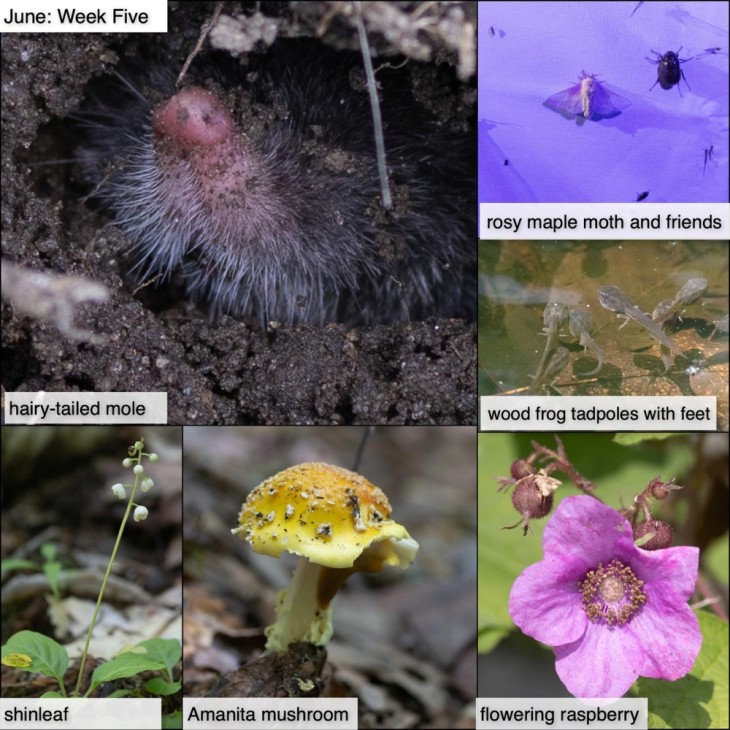This past weekend, a hairy-tailed mole encountered a rock underground and emerged into the daylight above it, scampered across the rock and jumped back into the earth. It then stuck its head out of a second hole, waggled its snoot around in elephant fashion – and subsided back into the ground, kicking out dirt to plug the hole behind it. This whole episode involved maybe a minute.
Moles are little-seen insectivores – they are not rodents, and are more closely related to shrews – which spend most of their time gobbling up grubs, worms, spiders and other small prey in shallow tunnels. Their eyes are poor, and in any event, there’s little need for sight underground, but moles are very good at picking up vibrations, and their abundance of whiskers help them to navigate in the dark. Although most of their forays to the surface world occur at night, hairy-tailed moles will sometimes make short daylight sprees, including across road pavement. Despite their status as the arch-nemeses of yard perfectionists, they actually have some lawn benefits – they aerate soil, and help to reduce insect pests.
Rosy maple moths are flying, and we saw a number of them this past Friday night, when Northern Woodlands hosted a “moth ball” behind our office in Lyme. This event was co-sponsored by the Lyme Conservation Commission and presided over by lepidopterist JoAnne Russo, who dazzled us with her moth species knowledge. We hope to post more photos soon, but for now, here’s a photo of a rosy maple moth and friends basking on a sheet in the ultraviolet light. As their name indicates, the caterpillars of these fuzzy yellow-and-pink silk moths feed on the leaves of maple trees, however they aren’t serious pests of the trees, and they’re exceptionally beautiful. Here’s a blog post by Kate Taylor about the moth ball event.
Remember that vernal pool that you visited back in April, to scope out amphibian eggs? It’s now roiling with plump wood frog tadpoles, many of them testing out tiny frog feet. The tadpoles don’t have a strict timeline for development. If the vernal pool’s water remains cool and the food supply plentiful, they may linger as tadpoles, and perhaps get bigger, before moving on to develop frog features. However, if conditions aren’t as favorable, their bodies may rush to develop into frog form – an adaptation that increases their chance of survival.
Flowering raspberries – also called thimbleberry - are blooming now. These plants spread vigorously in colonies and can produce human-height thickets, which make them great as wildlife shelter. Native bees and other pollinators visit the flowers, and although their berries aren’t especially tasty, birds and mammals gobble them up.
With the rising temperatures and recent rains, expect many more fungi to crop up in the woods this week, including brightly colored amanitas. We’re not sure which amanita this is (yellow patches, maybe?) but we do know that Wikipedia (which is never wrong) says that the genus is responsible for 95% of mushroom poisoning fatalities, so the main message here is – enjoy its beauty, from a distance. The “worts” on the mushroom’s cap are remnants of its universal veil – an egg-like covering that the mushroom breaks through as it develops. This ring around the stem is also a remnant of that veil.
Finally, we were pleased to find shinleaf (pyrola) in bloom. There are several similar looking species of these elegant little plants, which all have tall central stems and waxy flowers.
What have you noticed in the woods this week? Submit a recent photo for possible inclusion in our monthly online Reader Photo Gallery.


